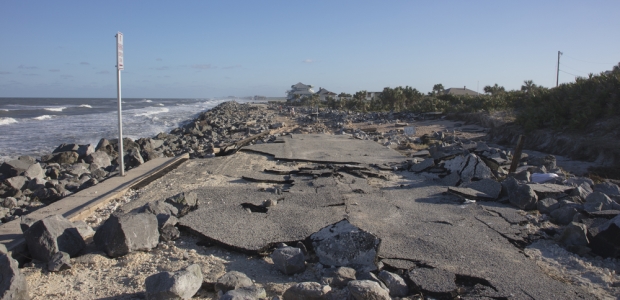
Windstorm Impact Reduction Strategic Plan Out for Comments
In terms of property losses covered by insurance, 14 of the 15 costliest natural disasters in U.S. history were due to windstorms: 12 hurricanes and two tornado outbreaks.
A draft of a new strategic plan for the National Windstorm Impact Reduction Program (NWIRP) was released last week for a 60-day comment period. The program is a federal initiative headed by the National Institute of Standards and Technology and intended to reduce loss of life and property from windstorms.
"This plan maps out a pathway to better understand, assess the impact from, and protect against windstorms," said NIST's Marc Levitan, the acting program director. "It will help us achieve the vision that defines NWIRP: a nation that is windstorm resilient in public safety and economic well-being."
Improved understanding of wind behavior is one of the goals of the strategic plan. It lays out three long-term strategic goals, 14 key objectives, and seven research priorities to guide and coordinate windstorm impact reduction research, development, implementation, education, and outreach activities conducted by the program's four member agencies: NIST, the Federal Emergency Management Agency, the National Oceanic and Atmospheric Administration, and the National Science Foundation.
Windstorms, most often in the form of hurricanes and tornadoes, are the largest loss-producing natural hazard in the United States, according to NIST, which reported that from 1980 until today, windstorms have caused more than $70 billion in economic losses and more than 4,500 deaths. In terms of property losses covered by insurance, 14 of the 15 costliest natural disasters in U.S. history were due to windstorms: 12 hurricanes and two tornado outbreaks.
Congress established NWIRP to reduce the losses.
NIST cites as an example of how the strategic plan is expected to work, ground-level winds from thunderstorm downbursts and tornadoes, adding that currently, little is known about the complex structure of these gusts close to the ground and how they affect buildings. "Since the first goal of our strategic plan is improving the understanding of windstorm processes and hazards, NWIRP efforts in this area would be focused on developing new instruments and obtaining field measurements to better characterize the ground-level wind phenomenon," Levitan said. He said the second goal is to improve our understanding of how ground-level winds affect communities.
Comments on the draft strategic plan are due by May 15 and may be emailed to [email protected] or mailed to NWIRP, Attn: Dr. Marc Levitan, NIST, 100 Bureau Dr., Stop 8611, Gaithersburg, MD 20899-8611.